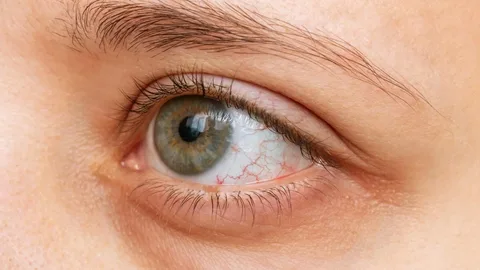Introduction
Dry Eye Syndrome, often referred to as DES or simply dry eyes, is a common ocular condition that affects millions of people worldwide. In this comprehensive guide brought to you by Cornea Center Omaha, we will delve into the intricacies of Dry Eye Syndrome. From its causes and symptoms to diagnosis, treatment options, and preventive measures, this article aims to provide you with a thorough understanding of this often overlooked but significant eye condition.
What is Dry Eye Syndrome?
Dry Eye Syndrome, as the name suggests, is a condition in which the eyes do not have enough moisture to maintain a healthy tear film. Tears play a crucial role in keeping the eyes lubricated, nourished, and free from irritants. When this delicate balance is disrupted, various uncomfortable symptoms can arise.
- Cornea Center Omaha’s Expertise At Cornea Center Omaha, our team of skilled ophthalmologists and optometrists specializes in diagnosing and treating Dry Eye Syndrome. With state-of-the-art facilities and a patient-centered approach, we are committed to helping individuals in Omaha and beyond find relief from dry eye discomfort.
Understanding the Anatomy of the Eye
Before we dive deeper into Dry Eye Syndrome, it’s essential to have a basic understanding of the eye’s anatomy and how it relates to tear production and distribution.
The Tears
- Composition of Tears Tears are not just salty water. They consist of a complex mixture of water, oil, mucus, and antibodies, each serving a unique purpose in maintaining eye health.
- The Tear Film The tear film is a thin, multi-layered structure that coats the surface of the eye. It has three main layers: the lipid (oil) layer, the aqueous (water) layer, and the mucin (mucus) layer.
Common Causes of Dry Eye Syndrome
Dry Eye Syndrome can be attributed to various factors, both internal and external. Understanding the root causes is essential for effective treatment and management.
Environmental Factors
- Climate and Weather Extreme temperatures, low humidity, and windy conditions can contribute to increased evaporation of tears, leading to dry eyes.
- Prolonged Screen Time Extended use of digital devices can reduce the frequency of blinking, which, in turn, affects tear distribution and leads to dryness.
Medical Conditions
- Hormonal Changes Certain hormonal imbalances, such as those occurring during menopause, can lead to dry eyes.
- Autoimmune Diseases Conditions like Sjögren’s syndrome can cause the immune system to attack the tear-producing glands.
Medications and Treatments Some medications, including antihistamines, decongestants, and certain acne treatments, can contribute to dry eye symptoms.
Recognizing the Symptoms of Dry Eye Syndrome
Dry Eye Syndrome can manifest in various ways, with symptoms ranging from mild to severe. It’s crucial to identify these signs early for prompt treatment.
Common Symptoms
- Dryness
- Irritation
- Redness
- Blurred Vision
- Sensitivity to Light
Less Common Symptoms
- Excessive Tearing
- Stringy Mucus in or Around the Eyes
- Discomfort While Wearing Contact Lenses
Diagnosing Dry Eye Syndrome
Proper diagnosis is the first step in effectively managing Dry Eye Syndrome. At Cornea Center Omaha, we employ a range of diagnostic tests to assess the severity of the condition and tailor treatment accordingly.
Comprehensive Eye Examination A thorough evaluation of the eyes, including visual acuity, slit-lamp examination, and measurement of tear production, helps in diagnosing Dry Eye Syndrome.
Schirmer’s Test This simple test measures the amount of tears produced over a certain period, helping to determine the severity of dryness.
Treatment Options for Dry Eye Syndrome
The management of Dry Eye Syndrome is multifaceted, with treatment approaches aimed at alleviating symptoms, addressing underlying causes, and promoting overall eye health.
Artificial Tears Over-the-counter artificial tears can provide temporary relief from dryness and discomfort by supplementing the eye’s natural tear film.
Prescription Medications In more severe cases, prescription eye drops such as cyclosporine or life grant may be recommended to reduce inflammation and improve tear production.
Punctal Plugs Tiny silicone or gel plugs can be inserted into the tear ducts to slow the drainage of tears, helping to maintain moisture on the eye’s surface.
LipiFlow LipiFlow is a cutting-edge treatment that uses heat and pressure to unclog the oil-producing glands in the eyelids, addressing the root cause of evaporative dry eye.
Lifestyle and Dietary Changes Certain dietary supplements, such as omega-3 fatty acids, and lifestyle modifications, like using humidifiers, can help manage dry eye symptoms.
Surgical Interventions In severe cases or when other treatments have been ineffective, surgical procedures like punctal occlusion surgery or gland expression may be considered.
Preventing Dry Eye Syndrome
Prevention is always better than cure. Taking proactive steps to minimize the risk of developing Dry Eye Syndrome can go a long way in preserving eye health.
Blink Regularly Conscious blinking helps spread tears evenly across the eye’s surface, preventing dryness during prolonged screen time.
Maintain a Balanced Diet A diet rich in omega-3 fatty acids, antioxidants, and vitamins can promote healthy tear production.
Stay Hydrated Proper hydration is essential for overall health, including the production of tears.
Protect Your Eyes Wearing sunglasses outdoors and using protective eyewear in dusty or windy conditions can shield your eyes from irritants.
Cornea Center Omaha Your Partner in Eye Health
Cornea Center Omaha is dedicated to providing exceptional eye care to the Omaha community and beyond. Our experienced team of eye specialists is well-equipped to diagnose and treat Dry Eye Syndrome and a wide range of other ocular conditions.
Conclusion
Dry Eye Syndrome is a prevalent eye condition that can significantly impact an individual’s quality of life. However, with early diagnosis, appropriate treatment, and preventive measures, it is possible to manage this condition effectively. Cornea Center Omaha is committed to helping individuals in Omaha and the surrounding areas find relief from dry eye discomfort and achieve optimal eye health. If you suspect you may have Dry Eye Syndrome or are seeking expert eye care, don’t hesitate to reach out to us for personalized guidance and treatment. Your eyes deserve the best care, and we are here to provide it.

